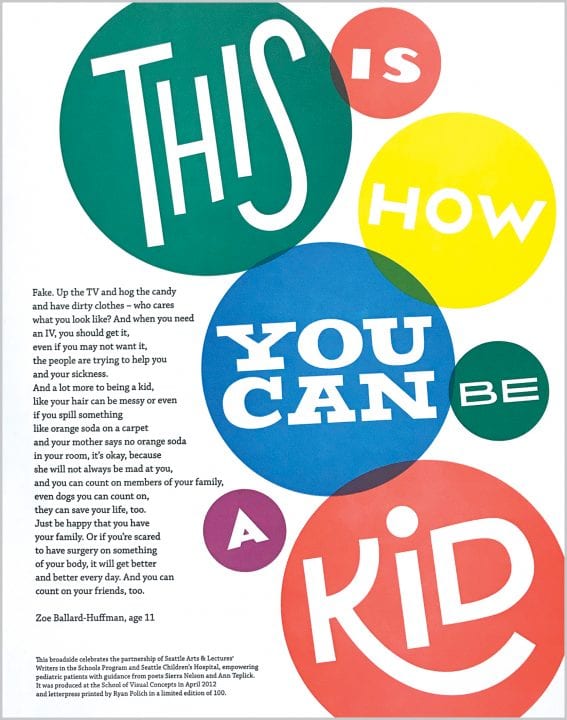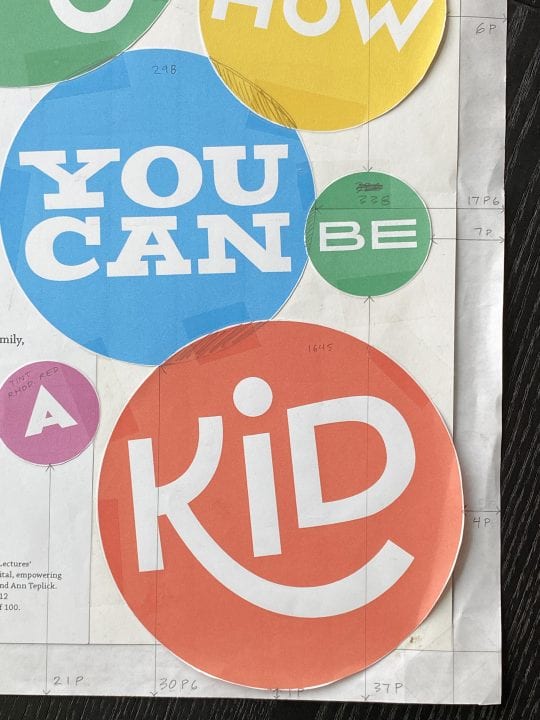
A Decade of Letterpress: Ryan Polich
January 14, 2021
Each year, in a project led by Sierra Nelson and Ann Teplick of Writers in the Schools, and the School of Visual Concepts, long-term patients from Seattle Children’s Hospital and a team of letterpress artists join forces to create an extraordinary collection of handprinted, limited-edition broadsides. In 2020, the Letterpress Program at the School of Visual Concepts became a new organization, Partners in Print, in order to maintain meaningful community collaborations like this one.
These works of art—which you may have oohed and aahed over at the SAL info table at in-person events or seen at local libraries or galleries as they toured around Seattle—are always colorful, fantastical, and deeply felt.
To celebrate a decade of this letterpress project, we’ve asked artists behind the press to give us an inside look at the process of turning youth poetry into art in a series of retrospectives on some of their favorite pieces over the years. Ryan Polich talks us through that process, focusing on “This Is How You Can Be a Kid,” a 2012 broadside created using a poem by Zoe Ballard-Huffman (then age 11).
How many years have you participated in the project?
Only the first two, sadly—but I look forward to participating again in the future.
What drew you to the poem you worked with?
“This Is How You Can Be a Kid” struck me for being really open and clear-eyed about what it’s like to grapple with a major illness as an 11-year-old. By the end of the poem, the tone becomes hopeful and optimistic, and that was compelling and inspiring to me. I wanted to find some way to bring that sense of hope to the design of the broadside.

Where did you find your inspiration?
I’ve been in love with print, typography, and design for as long as I can remember, and find inspiration in everything from vintage encyclopedias to album covers to neon signs. Signage is a big influence on how I think about typography as a design tool—finding ways for letters to do as much work as they can by themselves is always a challenge I appreciate.
What’s your favorite part of the project as a whole?
This feeling is especially keen during a pandemic that requires everyone to be distant from one another, but I think my favorite thing about the project is that by participating, you get to be part of a truly wonderful group of people. It’s really rewarding to work alongside such kind and talented folks on a project that radiates so positively out into our corner of the world.

Did this piece have any false starts or happy accidents?
I was going to skip this question, but I’ve been looking at the broadside for a while with new eyes (it’s been a few years since I printed it!), and I just realized the “A” in “CAN” is backwards! A total rookie mistake on my part, but there’s something kind of wonky and charming about it that would be missing if I had fixed it.

When you are not working on this project what do you do?
I’m a design director at Lucia|Marquand, where I design art books. I also teach hand lettering from time to time at the School of Visual Concepts.
Thank you, Ryan!